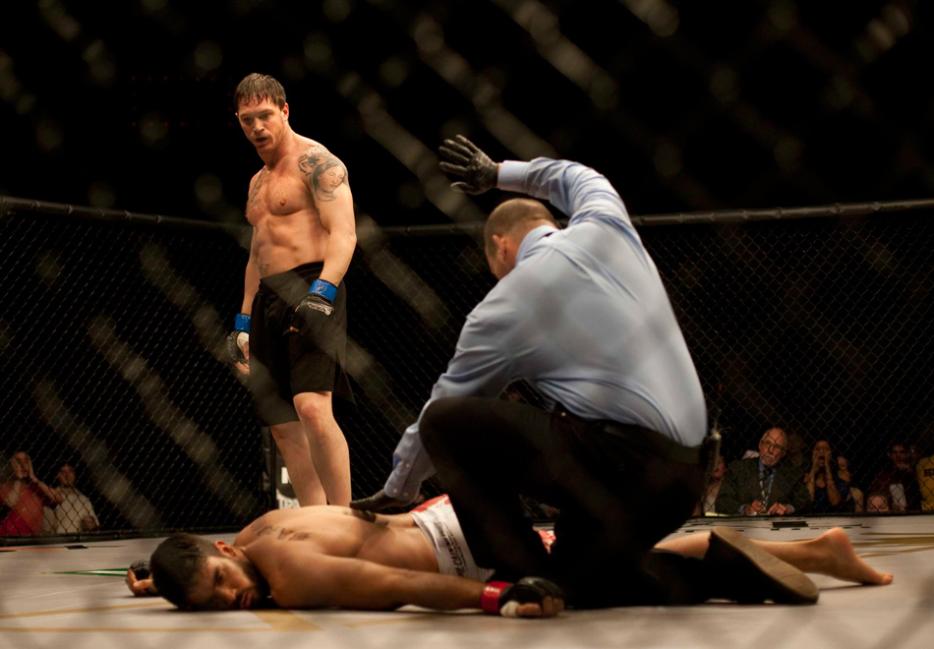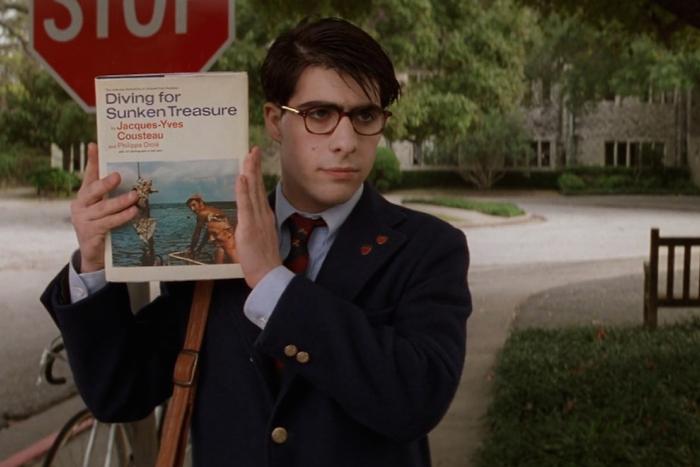Read enough scenes in literature in which bare knuckles meet cheekbones and cartilage and questions will arise—questions concerning pulp, violence, and glorification. But let’s not go there quite yet. Let’s look instead at what happens when the intellectual meets the visceral—literally, in this case. The basic setup of Kerry Howley’s debut book, Thrown, fits neatly into this tradition. Howley, a writer who was enrolled in a graduate program at the time her book opens, describes how she became obsessed with the world of mixed martial arts, and spent an abundance of time with a pair of fighters over the span of a few years. It’s a world of undiagnosed concussions, economic uncertainty, and familial schisms; a writer looking to investigate such terrain runs the risk telling a story in which violence is a cause, rather than a reaction—the learned author parachuting in to either stand in judgment or teach the barbarians the true nature of their brutality. Howley’s handling of this very contradiction, though, is what helps to make Thrown so memorable, both for its narrative urgency and the nuanced juxtaposition it presents, finding unexpected parallels between the academic and the fighter.
There’s a precedent for the kind of narrative exploration in which Howley is engaged. Bill Buford’s 1991 Among the Thugs is a justifiably lauded work of nonfiction focusing on hooliganism in soccer, in which he follows groups of English men whose passion for their local soccer team spills over into extreme acts of violence. (In one particularly harrowing moment, we’re introduced to an affable type whose manner Buford describes as “lionhearted.” We’re treated to the image of that same man tearing out a police officer’s eye with his teeth.) Buford was an outsider to this group—an American expatriate, living in London and editing the acclaimed literary journal Granta—and so all of those potentially jarring ingredients are there as well: the push and the pull, the story of the intellectual outsider and his experience with a violent subculture.
In the years since Buford’s book was released, that juxtaposition has shown up again and again in acclaimed works of fiction and nonfiction. Donald Ray Pollock’s 2012 novel The Devil All the Time blended pulpy thrills with ruminations on cycles of flawed behavior, following the legacy of violent acts across generations. Fittingly, Pollock has blurbed Frank Bill, whose collection Crimes in Southern Indiana focused on ... well, you can probably figure that one out; Bill’s follow-up Donnybrook, meanwhile, centered on an illegal bare-knuckle fighting tournament. In 2011, the now-defunct art publisher Picturebox began reissuing the pulp-infused books of Charles Willeford, including the 1962 novel Cockfighter. (That title is not a metaphor.) And influential contemporary authors such as Katherine Dunn and Cormac McCarthy have embraced the brutal and the sordid, whether it’s the former finding the tragic in sideshow figures in Geek Love, or the latter turning Western archetypes into the stuff of horror in Blood Meridian and No Country for Old Men.
A narrative focusing on a visceral way of life, or using that focus to point to larger socioeconomic questions, is one thing; reveling in violence and poverty for the sake of it—or to demonstrate the degree to which you can appreciate and transcend it—is another.
Still, writers whose work deals with violence face the ever-present danger of fetishizing that very brutality. Author J. David Osborne,11Full disclosure: as an editor, I have published a story of Osborne’s; I also contributed to the initial fundraiser for Broken River, which did not include this book. who also runs the crime-fiction-focused Broken River Press, perfectly satirizes this tendency in his story “Gritty,” which appears in his collection Our Blood in its Blind Circuit. It opens:
Sam Titiriga is 100% blue fuck positive he can whip anyone’s ass, and he says as much over the beer he’s drinking in a small bar that’s got a jukebox and a pool table and probably a bunch of cars parked on gravel out back. He’s from the south which is mostly just dirt roads and people who smoke a lot of methamphetamines and let’s face it, I mean, if you’re from an area like that there’s not much to do except whip a lot of ass.
“Gritty” proceeds from there, following Sam through a series of violent encounters at motels and bars even as Osborne’s narration nods to the reader that they’ve seen this kind of shorthand before in stories where poverty and desperation serve as simple window dressings for one’s narrative. While Osborne’s tone is magnificently satirical, the question he raises of where the line between art and exploitation exists when writing about largely working-class brutality is a challenging one. A narrative focusing on a visceral way of life, or using that focus to point to larger socioeconomic questions, is one thing; reveling in violence and poverty for the sake of it—or to demonstrate the degree to which you can appreciate and transcend it—is another.
(This might be the time to bolster Osborne’s story by cueing up “Common People” on Spotify, or watching any of Mr. Show’s Ronnie Dobbs sketches, in which an erudite British journalist becomes obsessed with an abusive, frequently arrested, working-class lout.)
While there’s unlimited potential for a writer—particularly one coming from cloistered academia to explore a world such as the one of ritualized violence in which combat sports exist—to stumble over issues of power, of class, of age, and of gender, there have been some recent successes: Earlier this year, The New Yorker published a lengthy piece from Kelefa Sanneh on fighter Ronda Rousey, and Willie Osterweil has written in The New Inquiry about questions of labor rights in Ultimate Fighting Championship, the largest promoter in the sport. But the primary attraction for writers to mixed martial arts isn’t hard to understand. Beyond those sociopolitical themes, there’s the more obvious drama that comes from, well, two people standing in a ring pummeling one another, strategizing their next move, providing a taut and bloody canvas on which writers can build one narrative atop the edifice of another.
Which brings us back to Thrown. Howley is well aware of the inherent contradictions in the story she’s telling, tweaking her narrative voice at times to one supremely stylized and self-aware. (“It had a frigid purity, that February night; for it was only weeks before something crept between Sean and me…”) Early on, she anticipates that her narrative persona will be challenged as fictional. Her response includes the following discourse on reliability:
My (admittedly neurotic) progenitor, on the other hand, is so conscious of her own tendency towards self-confabulation that she hesitates to call anything she says of herself a fact. She has never known a real person who saw herself with even passable clarity; never known a storyteller who could tell of a trip to the supermarket without self-gratifying sins of omission. All narrators, I say, are fiction. All. The reliable ones have the decency to admit it.
It almost borders on self-parody, but it starts to become clear that this is the point: it’s an intentional affectation, evoking the mannerisms of über-academic among fighters. Howley writes about discovering her first fights because she had “nothing to do in Des Moines beyond explore Husserl with nonsmokers who did not understand him.” It’s during one of these fights that she encounters the first of the two men who will become the twin focuses of Thrown: a veteran fighter named Sean Huffman whom she watches take a beating, a scene of which she writes, “I had the oddest feeling of a cloudiness momentarily departing.”
Howley soon becomes a spacetaker (an entourage-y position that is, in Howley’s phrasing, “that which separates your goodly fighter from the common thug”) for Huffman; not long after that, she begins to occupy a similar role for Erik Koch, younger by a decade and with clearer career prospects. She traces their fortunes: Huffman remains on the fringes of the sport, while Koch’s position becomes more prominent. Each has his share of familial drama: in Koch’s case, it’s a rivalry with his brother Keoni, also a fighter; for Huffman, his conflicted relationship with the mother of his child, which results in some of the most wrenching passages in the book. And while the fights in which both men take part do make for gripping drama—sometimes the question is whether they’ll win; others, it’s how badly they’ll lose—much of the pleasure of Howley’s book comes from simply spending time with them. Huffman is fond of talking politics, while Koch’s rise through the ranks lets Howley turn her eye to the sport’s inherent instability, making it clear just how much fighting represents to those who take part in it. Huffman’s own economic existence is a striking case in point, as he weighs the merits of taking on a more traditional job against the amount of time he needs in order to perfect his craft. Given that Howley is herself a writer of literary nonfiction, the parallels between the two are implicit: Huffman’s is a decision that will resonate with anyone who has pursued an unconventional means of making a living.
But Howley isn’t writing about avant-garde painters or stonemasons here. The violence in which the subjects of her book take part is essential to the narrative, and she’s careful not to downplay its appeal. Two-thirds of the way through Among the Thugs, Buford describes being enmeshed in a scene of street violence as “[a]n experience of absolute completeness.” There’s an echo there of Howley feeling the departing cloudiness as she bears immediate witness to extreme violence; even more directly, there’s Jonathan Chait’s recent essay on football, in which he refers to the experience of playing the sport in high school as “the adventure of your life.” (Chait makes the case that this is a specifically male phenomenon, though Howley’s experience suggests otherwise.) Perhaps that’s part of the draw of books like these: it’s a kind of revelation, a demonstration that even the most intellectual among us finds violence alluring—the same sort of slow transformation that gave us, say, Breaking Bad’s five-season-long progression from science teacher to crime-lord. But even that seems to be too easy an answer, and no less of a potentially exploitative take on the subject: instead of a highbrow look at working-class violence, it’s a kind of Secret Lives of Academics, a place where a theoretically neutral observer can watch as the theoretically detached journalist discovers her taste for brutality, sinking down to the imagined level of her subjects, rolling around in the blood with them.
In Howley’s case, it’s not an accident that her own (or her surrogate’s own) progression mirrors some of the hard questions faced by Huffman and Koch. She clashes with her academic department, and wrestles with the approach for writing about the fights she’s witnessing. It’s probably worth noting, too, that Thrown is not an academic book, but its very existence and the fact that a reader is reading it becomes the endpoint of one of the strands of Howley’s narrative. Thrown stands out to the degree that it does because Howley embraces the contradictions of her premise in a way few authors do: she knows what the tropes are, and notes and embraces them rather than shuns them. And in the end, this makes her book’s look at ritualized violence both unconventional and thoroughly empathic. She doesn’t have to lower herself to find common ground with the fighters; she was never above them to begin with.






